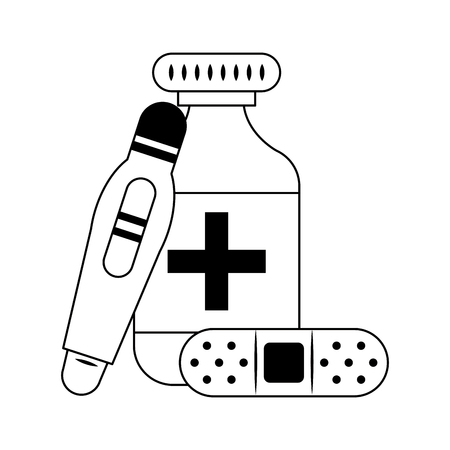1. Understanding Under-Eye Fillers
Under-eye fillers have become a popular solution for individuals looking to reduce the appearance of dark circles, hollowness, and fine lines under their eyes. These fillers are typically made from hyaluronic acid, a substance that naturally occurs in the body and helps maintain hydration and volume in the skin.
How Do Under-Eye Fillers Work?
The procedure involves injecting small amounts of filler into the under-eye area to add volume and smooth out any depressions. The treatment is minimally invasive, requires little to no downtime, and provides immediate results. Over time, the filler integrates with the surrounding tissue, creating a more youthful and refreshed appearance.
Why Are Under-Eye Fillers Popular?
Many people opt for under-eye fillers because they offer a non-surgical way to enhance their appearance. Some common reasons include:
| Reason | Description |
|---|---|
| Reducing Dark Circles | Fillers help minimize shadows caused by hollowness under the eyes. |
| Smoothing Fine Lines | The added volume can improve the look of fine lines and wrinkles. |
| Restoring Lost Volume | Aging leads to volume loss under the eyes, which fillers can restore. |
| Avoiding Surgery | A non-invasive alternative to procedures like lower blepharoplasty. |
The Longevity of Under-Eye Fillers
The effects of hyaluronic acid fillers typically last between 6 to 18 months, depending on factors such as metabolism, lifestyle, and the type of filler used. While many people are satisfied with their results, some may decide to dissolve their fillers if they experience complications or simply wish to return to their natural appearance.
2. Reasons to Dissolve Under-Eye Fillers
While under-eye fillers can be a great way to refresh your appearance, there are times when dissolving them might be the best option. Here are some of the most common reasons people choose to have their fillers dissolved.
Filler Migration
One of the most frequent issues with under-eye fillers is migration. This happens when the filler moves from its original placement, creating an unnatural look. Because the under-eye area is delicate, even a small shift in filler placement can lead to puffiness or irregular contours.
Puffiness and Swelling
Some individuals experience persistent puffiness after getting under-eye fillers. This can happen if too much product was injected or if the filler attracts water, leading to a swollen appearance. If this doesn’t subside over time, dissolving the filler may be necessary.
Asymmetry
Achieving perfect symmetry with fillers can be challenging. Sometimes, one side may retain more filler than the other, causing an uneven look. In these cases, dissolving the filler can help restore balance before considering a corrective treatment.
Dissatisfaction with Results
Not everyone loves their results after getting under-eye fillers. Whether it’s due to unrealistic expectations, an overfilled look, or simply preferring a more natural appearance, dissolving the filler allows patients to reset and explore other options.
Common Reasons for Dissolving Under-Eye Fillers
| Reason | Description |
|---|---|
| Filler Migration | The filler moves from its original placement, creating an unnatural appearance. |
| Puffiness & Swelling | The area appears overly puffy due to excess filler or water retention. |
| Asymmetry | One side looks different from the other due to uneven distribution of filler. |
| Dissatisfaction | The results don’t meet expectations or appear overdone. |
When to Consider Dissolving Your Fillers
If you’re experiencing any of these issues and they haven’t improved over time, it may be worth consulting with a qualified provider about dissolving your under-eye fillers. A professional can assess your concerns and determine if hyaluronidase (the enzyme used to dissolve hyaluronic acid fillers) is the right solution for you.

3. How the Dissolving Process Works
If you’ve decided to dissolve your under-eye fillers, you might be wondering how the process works. The key ingredient used for dissolving hyaluronic acid fillers is an enzyme called hyaluronidase. This enzyme helps break down the filler safely and effectively, allowing your body to naturally absorb and remove it.
Step-by-Step Breakdown of the Dissolving Process
1. Consultation with a Professional
The first step is scheduling a consultation with a qualified provider. They will assess your concerns, examine the treated area, and determine if dissolving is necessary.
2. Allergy Test (If Needed)
Some individuals may have sensitivity to hyaluronidase. If you’ve never had this enzyme injected before, your provider may perform a small patch test to check for any allergic reactions.
3. Cleansing the Treatment Area
Before the procedure begins, the under-eye area is thoroughly cleaned to reduce the risk of infection.
4. Numbing for Comfort
A topical numbing cream or local anesthetic may be applied to minimize discomfort during the injection process.
5. Hyaluronidase Injection
The provider carefully injects hyaluronidase into the areas where the filler needs to be dissolved. The enzyme starts working almost immediately to break down the hyaluronic acid.
6. Waiting for Results
Most people notice changes within 24-48 hours, but full results can take up to a week as the body continues to metabolize the dissolved filler.
7. Follow-Up Appointment
Your provider may schedule a follow-up visit to ensure that all unwanted filler has been successfully removed and discuss any next steps if additional treatments are needed.
What to Expect After Treatment
| Timeframe | What Happens |
|---|---|
| First 24 Hours | Mild swelling or redness at the injection site; initial breakdown of filler begins. |
| 1-2 Days | The filler continues to dissolve; noticeable reduction in volume. |
| Up to 1 Week | The body fully absorbs the dissolved filler; final results become visible. |
Possible Side Effects and Aftercare Tips
- Mild Swelling and Bruising: Applying a cold compress can help reduce swelling.
- Tenderness: Some soreness at the injection site is normal but should subside within a few days.
- Avoid Strenuous Activities: Give your body time to heal by avoiding intense workouts for at least 24 hours.
- No Makeup Immediately After: Wait at least 12-24 hours before applying makeup to prevent irritation or infection.
- Hydration and Skincare: Keeping your skin hydrated can support healing and maintain overall skin health.
When to Contact Your Provider
If you experience excessive swelling, pain, or any unusual side effects after treatment, reach out to your provider right away for further evaluation.
4. What to Expect During and After Dissolving
The Procedure: How It Works
Dissolving under-eye fillers is a straightforward process performed by a qualified provider using hyaluronidase, an enzyme that breaks down hyaluronic acid-based fillers. The treatment typically involves the following steps:
- Consultation: Your provider will assess your concerns and determine if dissolving is the best option.
- Preparation: A numbing cream may be applied to minimize discomfort.
- Injection: Hyaluronidase is injected into the treated area to dissolve the filler.
- Massage (if needed): The provider may gently massage the area to help distribute the enzyme evenly.
- Observation: You may be monitored for a short period to ensure no adverse reactions occur.
Recovery Timeline: What to Expect After Treatment
The recovery process varies from person to person, but here’s a general timeline of what you might experience:
| Timeframe | What to Expect |
|---|---|
| Immediately After | Mild swelling, redness, and slight tenderness at the injection site. |
| First 24-48 Hours | Puffiness or minor bruising may appear but should subside gradually. |
| 3-7 Days | The filler continues to break down, and results start becoming noticeable. |
| 2 Weeks | The full effect of the treatment is typically visible, and any residual swelling should resolve. |
Potential Side Effects and Risks
Dissolving under-eye fillers is generally safe when performed by a skilled professional, but some temporary side effects can occur, including:
- Mild swelling and redness at the injection site.
- Puffiness or uneven texture that resolves over time.
- Sensitivity or tenderness in the treated area.
- Bruising, which fades within a few days.
- A rare allergic reaction to hyaluronidase (always discuss allergies with your provider beforehand).
How Long Until You See Results?
The speed at which the filler dissolves depends on various factors, including the amount of filler present and individual metabolism. Most patients notice significant improvements within a few days to two weeks. If additional treatments are needed for complete removal, your provider may recommend follow-up sessions.
5. Deciding on Your Next Steps
After dissolving your under-eye fillers, you may wonder what to do next. Should you go filler-free, try a different type of filler, or explore alternative treatments? The right choice depends on your goals, skin condition, and past experience with fillers.
Should You Go Filler-Free?
If you weren’t happy with the results of your under-eye fillers or experienced complications, you might consider embracing a natural look. Some people find that maintaining good skincare, staying hydrated, and getting enough sleep can improve the appearance of their under-eye area without the need for fillers.
Trying a Different Type of Filler
If you still want some volume under your eyes but were unsatisfied with your previous filler, switching to a different type might be an option. Different hyaluronic acid fillers have varying levels of thickness and longevity, which can affect how they look and feel in the under-eye area.
| Filler Type | Benefits | Best For |
|---|---|---|
| Hyaluronic Acid (HA) | Naturally dissolves over time; reversible if needed | Mild to moderate volume loss |
| Calcium Hydroxylapatite (CaHA) | Stimulates collagen production; longer-lasting | Mature skin with deeper hollows |
| Poly-L-lactic Acid (PLLA) | Gradually builds collagen for a natural effect | Poor skin elasticity and significant volume loss |
Exploring Alternative Treatments
If fillers didn’t work well for you, there are other treatments that can improve the appearance of dark circles, hollows, or fine lines under the eyes.
Laser Treatments
Certain laser treatments can help tighten skin and reduce pigmentation, making the under-eye area look brighter and smoother.
Microneedling with PRP
This treatment uses tiny needles and platelet-rich plasma (PRP) to stimulate collagen production, improving skin texture and firmness over time.
Surgical Options
If youre looking for a more permanent solution, procedures like lower blepharoplasty (eyelid surgery) can remove excess fat or tighten loose skin under the eyes.
Consulting with a Professional
The best way to decide on your next steps is to consult with an experienced provider. They can assess your individual needs and recommend the most suitable option based on your facial structure, skin type, and aesthetic goals.

